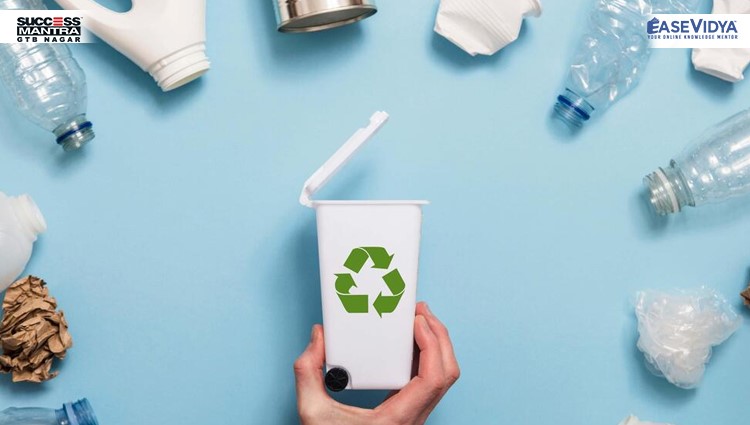
SINGLE USE PLASTIC
March 1, 2022
10 MINUTES
SINGLE USE PLASTIC
Introduction:
India is committed to take action for mitigation of pollution caused by littered single use plastic. With the clarion call given by PM Narendra Modi to phase out single use plastic by 2022 , THE MOeS notified The Plastic Waste Management Amendment Rules 2021 which prohibits identified single use plastics use items which have low utility and high littering potential by 2022. The government’s notification has banned the manufacture, sale and use of identified single-use plastic items like plates, cups, straws, trays, and polystyrene from Jul 1, 2022.
What are single use plastics?
- There is no central and comprehensive definition for single-use plastic, crucial for any ban to be successful.
- Governments currently use various definitions.
- The problems caused by them were recognized in 2007.
- It has been found everywhere i.e. right from depth of the oceans to the peaks of Himalayas.
- Single use plastics are used once and thrown away.
- They accumulate in the water bodies and choke the drains which lead to floods.
Alternatives:
- In India in the absence of robust testing and certification to verify claims made by producers, spurious biodegradable and compostable plastics are entering the marketplace.
- In January this year, the CPCB said that 12 companies were marketing carry bags and products marked ‘compostable’ without any certification, and asked the respective State Pollution Control Boards to take action on these units.
Impacts:
- While it is still unclear, some studies suggest that plastic bags and Styrofoam containers can take up to thousands of years to decompose, contaminating soil and water, and posing significant ingestion, choking and entanglement hazards to wildlife on land and in the ocean.
- Due to their light weight and balloon-shaped design, plastic bags are easily blown in the air, eventually ending up on land and in the ocean.
- Styrofoam items contain toxic chemicals such as styrene and benzene. Both are considered carcinogenic and can lead to additional health complications, including adverse effects on the nervous, respiratory and reproductive systems, and possibly on the kidneys and liver.
- Several studies have shown that the toxins in Styrofoam containers can transfer to food and drinks, and this risk seems to be accentuated when people reheat the food while still in the container.
- In low-income regions, domestic waste – including plastics – is often burnt for heating and/or cooking purposes, largely exposing women and children to prolonged toxic emissions.
- Stranded single-use plastics create visual pollution and are increasingly becoming a priority especially in countries that rely heavily on tourism as a major source of GDP, such as Small Island Developing States.
- Styrofoam products present challenging recovery dynamics, making recycling – although technically possible – often financially unviable.
- Because of the porosity of foamed plastic products, cleaning such products, which are often contaminated with food or drinks, is difficult and energy-intensive, further increasing the cost of recycling.
Solutions:
- Promote alternatives like cotton, khadi bags and biodegradable plastics.
- Provide economic incentives to encourage the uptake of eco-friendly and fit-for-purpose alternatives that do not cause more harm. Support can include tax rebates, research and development funds, technology incubation, public-private partnerships, and support to projects that recycle single-use items and turn waste into a resource that can be used again.
- Reduce or abolish taxes on the import of materials used to make alternatives.
- Provide incentives to industry by introducing tax rebates or other conditions to support its transition. Governments will face resistance from the plastics industry, including importers and distributors of plastic packaging. Give them time to adapt.
- Use revenues collected from taxes or levies on single-use plastics to maximise the public good. Support environmental projects or boost local recycling with the funds. Create jobs in the plastic recycling sector with seed funding.
- Enforce the measure chosen effectively, by making sure that there is clear allocation of roles and responsibilities.
- Monitor and adjust the chosen measure if necessary and update the public on progress.













0 Comment